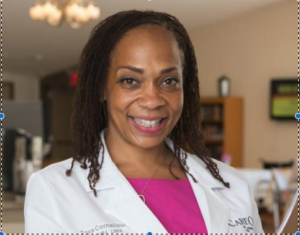
When the New Jersey Department of Health called in late March for assistance at a nursing home in the area that was overrun with COVID-19, CareOne acted fast.
“We were able to relatively quickly pull together some directors of nursing and administrative nurses and support the sisters providing primary care to people at St. Joe’s,” Lizzy Straus, executive VP of operations for CareOne, a family-owned chain of post-acute care facilities, long-term acute care hospitals and assisted living facilities in New Jersey, told McKnight’s Long-Term Care News.
The situation at St Joseph’s Senior Home in Woodbridge turned out to be dire. Three nuns, who were sick with symptoms from the coronavirus, were caring for some 85 residents by themselves; the rest of the staff were not coming into work. The nuns were feeding the residents just twice a day. All the residents were presumed COVID-19-positive.
“We were frank about what we viewed the situation to be,” noted Thomas McKinney, senior vice president of CareOne.
Following a candid report by CareOne, the DOH concluded that an evacuation of St. Joe’s was in order. CareOne and the DOH agreed to transfer the residents to CareOne at Hanover Township in Whippany, a post-acute care and COVID-naïve facility. To make the transfer work, Hanover’s residents had to be transferred to CareOne’s other area facilities. Just three days after the DOH call, on March 25, 79 residents from St. Joe’s were transferred by the Office of Emergency Management in coordination with the state police to the Hanover facility.
There “they were met by a tremendous team of clinicians,” McKinney said. “We had been fortunate enough to have sufficient PPE [personal protective equipment], and under Lizzy’s direction, we mobilized early in the crisis to ensure a long-term supply of PPE and had resources to procure them in the marketplace.”
Caring for COVID-19 residents
Taking care of a facility of coronavirus patients required coordination, said Toya Casper, chief clinical officer of CareOne.

“In accepting these residents, we assembled a team of 40 registered nurses and physical therapists to triage people on the way in to an appropriate level of care,” she said, noting that 10 residents came in by wheelchair, just a couple walked in and the rest arrived by stretcher. “It was a challenge because the building went from being COVID-naïve to being more demanding than the building was accustomed to, so we had to adjust accordingly.”
Casper said a plan of care was established based on the residents’ needs. Those residents who were dying were seen by palliative care physicians, she said. The facility also was able to tap into other resources for the emergency, such as chaplains. And it leaned on its long-term care pharmacy for medications, which were delivered by the time the new residents arrived.
“Frankly, nothing came with these patients,” McKinney said. “No medical supplies, no drugs. Everything in [the St. Joe’s] facility was deemed to be possibly contaminated.”
McKinney noted that CareOne’s chief medical officer developed protocols with Casper “to ensure we not only were prepared to deliver care but deliver good outcomes with recuperation.”
To help “run a state-of-the-art facility,” CareOne installed HEPA filters in rooms to reduce the viral load, McKinney said.
Among the clinical accomplishments the team made was identifying nontraditional symptoms that were precursors to positive COVID-19 tests among asymptomatic residents. For example, poor appetite, a temperature threshold of 99 degrees and oxygen levels below 88.5 were consistent with being positive for COVID-19, Casper said. The Centers for Disease Control and Prevention had not yet pinpointed these symptoms, McKinney noted.
Lessons learned
CareOne now has discharged the former COVID-19-positive residents — 42 residents in total — back to St. Joe’s. Those include a 94-year-old Holocaust survivor. These residents are considered to be recovered.
“At the end of the day, we are not miracle workers, but doing our best and exceeding results that our peers are seeing,” McKinney said.
One number that goes underreported in the press is the number of people who get well from COVID-19, McKinney pointed out.
“When you only report COVID numbers and deaths without identifying the number who recover, you are not providing the public or the consumers the opportunity to evaluate outcomes,” he said.
One lesson learned from the crisis? People who have COVID-19 can survive and make a full recovery.
“The virus isn’t a death sentence. In a setting like ours, people can recover,” McKinney said.





